Dear Artist,
My Dad had a theory about how to sustain and elongate periods of productivity and happiness in his studio. He said it had less to do with planning and was more aligned with what he called, “intuition zones.” His life, it seemed, was organized like a Montessori classroom: painting station, yogurt station, thinking station, bath station, writing station, forest station. Perhaps it was the rhythm of these activities, repeated daily but without the constraints of a dogmatic regime that gave him the feeling that he was fluttering automatically between them by way of his intuition. The secret, he said, was to move as moved; guilt-free, from station to station, to the beat of one’s creative rhythm, need for rest, sustenance and connection. Nap station for example, a tricky one for rookies, once mastered, would prove to be a cornerstone of creative joy and achievement.
Today, mid-2021, more of us have been nudged towards our own intuition zones. The instantaneous deinstitutionalization of workers last year, for example, thrust once-commuters into domestic flex-spaces. Overnight, systems of productivity were flipped, scrapped and blank-slated, with all kinds of workers given the chance to re-invent these systems on their own terms, and tasked with compartmentalizing an existing compartment — their home. The advantage of blurring laundry with contemplation, idea generating and meetings, say, is that, while challenging, it forces us to grab ahold of our hours, and to feel our way through the rhythms of our own creative metabolisms. Suddenly, we are moving between our intuition zones.
Today, the news feed predicts a mass-resignation event, spawned by the collective discovery of our natural rhythms and a resistance to return to the way things were. Modern-day work, modeled on a century-old factory system, has met with a kind of reckoning. Was it, in fact, the most efficient? Was it healthy? Was it the most creative? Did it produce the best work? Was it good for the planet or people? What kind of life was it? Understandably, not all jobs are right for intuition zones — the garbage collector still needs to jump on her ride, as does the downhill skier. But creativity does support zoning. Creativity thrives under it. All that’s needed are a few lovingly prepared activity stations.
Sincerely,
Sara
PS: “I’ve found that an artist’s life has little or nothing to do with what anybody else does. But while being guilt-free, it’s an added embellishment if we also respect the roles and habits of others around us.” (Robert Genn)
Esoterica: Art teachers have lamented that a major problem is students spending most of their time getting ready and clearing up. Intuition zones need to be ready for the zoner. Design your zones to be simple and clear in function. Stock them generously. Make them inviting. Now put them on repeat. Soon, your zones can emerge, gelled, as your own, purpose-built, hyper-useful and totally unique-to-you, creative life.
Have you considered a Premium Artist Listing? With each letter, an artist is featured at the bottom of this page. The Premium Artist Listings are a means of connecting artist subscribers through their work. Proceeds from each listing contribute to the production of The Painter’s Keys.
“The most demanding part of living a lifetime as an artist is the discipline of working steadfastly along the nerve of one’s own intimate sensitivity.” (Anne Truitt)
Featured Workshop
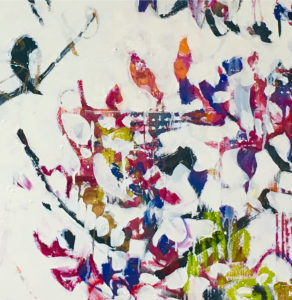 Join Ellie Harold for “Intuitive Painting: Permission to Paint Expressively,” designed especially for mature women artists of all skill levels who wish to explore this medium for soulful exploration. The retreat provides attractive accommodations (your own room!) along with lightly structured activities for centering, relaxation and low stress art-making. You’ll have plenty of free time to muse, paint, write and reflect while enjoying the colors, textures and flavors of San Miguel. This Retreat has the potential to transform not only your art but your life! You’ll return home with a specific art “care plan” to assure support for further creating. Details at www.EllieHarold.com.
Join Ellie Harold for “Intuitive Painting: Permission to Paint Expressively,” designed especially for mature women artists of all skill levels who wish to explore this medium for soulful exploration. The retreat provides attractive accommodations (your own room!) along with lightly structured activities for centering, relaxation and low stress art-making. You’ll have plenty of free time to muse, paint, write and reflect while enjoying the colors, textures and flavors of San Miguel. This Retreat has the potential to transform not only your art but your life! You’ll return home with a specific art “care plan” to assure support for further creating. Details at www.EllieHarold.com.
Featured Artist
I am a painter. I am delighted to be a painter.

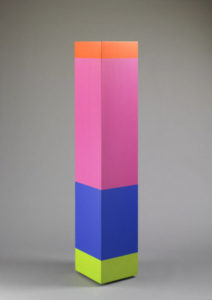
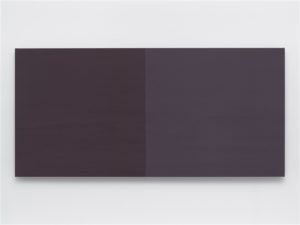
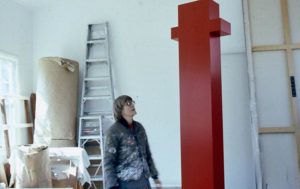
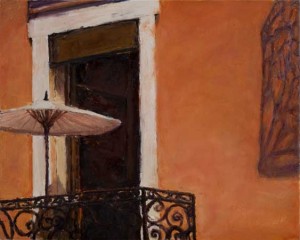



10 Comments
This is a nice reminder for me to take the “shoulds” out of my studio practice.
Wonderful post! Without ever conferring with anyone I seem to have adopted the same methodology as your dad, and yes, it makes a difference. It allows me to float between states of being without ever quite forgetting the project itself, but experiencing it from various perspectives.
Marvelous article here about the kind of life I have been in. I have so often tried to explain
this kind of action-mode to my friends and family. Robert Genn figured it out. His daughter
has passed along a gem, and made it so peculiarly pertinent to our free-wheeling new kind of
life induced by medical limitation laws and political uneasiness. What a trip!
Thank you Susan ;. you have helped me understand & appreciate what Robert & daughter Sara are expressing.; yes, in our “medical limitation & political uneasiness” lives we face.
As always, Sara…with thanks for your continued enthusiasm to spread “the word”.
Yes…San Miguel is a very special place to explore oneself mentally &/or physically.
I did way back 60 years ago!!!
Cheers.
The Genns are Saints in our art world> Still re-reading his book of letters and viewed the video of you in Palm Springs . Did that old guy ever do a good job on you! The two of you are such a gift to us. I am 89 and still being given a boost by the both of you. Yes, I am painting. I love you!
I think it depends. It depends on what kind of person you are. It depends on what kind of home life you already have – do you have children for instance – which can alter the functionality of that space – I have clients who are desperate for children to go back to school so that they can at least have space and time on their own for their own work. It depends on what kind of work you do and whether it benefits from interaction with others. One of my clients has struggled with depression while unable to interact with other students on her PhD. She’s an extrovert and that makes another point – artists are often introverts, happy to spend endless amounts of time alone. While I notice some of my clients really need to get back to the office for the buzz of interconnection – they’re sick of zooming. One has different conversations in corridors or by water coolers than face to face on Zoom. For myself, I love the studio life – the quiet, the peace and the chance to live within my own rhythms. And I relate to the idea of being moved by intuition and therefore the need to be quiet within so that intuition can arise and be noticed. What would be great is if we have the choice and maybe that’s what will come out of this, not an idealisation of any particular way of working but more choice to work in the way that seems to work for each of us.
This is such a perfect read as I just cleaned my studio and started the stations unknowingly. It confirms that having stations is like any kitchen. Sometimes you have to let a few things bake while you prep.
I’m fairly new to these letters and I love them all. I started painting in 71 at Jackson Square in New Orleans, LA. There was a “colony” of artists starting around ’45. We oldies who are still alive are putting together names and stories of the earlier artists up to today. We all practiced the type of routine described in this letter. Was a wonderful life. If anybody is interested, you can find some typical and not so typical artist stories on “Jackson Square Artists-Memories” on Facebook groups. It’s open to the public. It’s interesting how the artwork, morals, tourists and general social behavior has changed over the years that have been expressed and felt in that one art world of over 200 artists at any given time.